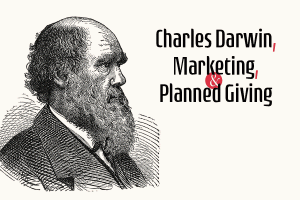
Do For-Profits Raise Planned Gifts?
Do for profits copy nonprofits? Often. Does the nonprofit sector copy the for-profit sector? Not often enough. Read on how being challenged can help our sector.
Home » Planned Giving Marketing » Page 22
CATEGORY
Strategies and best practices for communicating planned giving effectively. Covers messaging, content development, digital presence, donor education, and positioning planned giving as a core component of fundraising strategy.

Do for profits copy nonprofits? Often. Does the nonprofit sector copy the for-profit sector? Not often enough. Read on how being challenged can help our sector.

Unlike the traditional planned giving newsletter that is challenging to implement, the Newslet addresses your need to deliver your message in an affordable and expeditious manner.

Most nonprofits have a reversed Darwinian approach to new idea generation. Instead of survival of the “fittest” they strive for survival of the “safest.”

Everyone focuses on the importance of planned giving from a financial perspective. When in fact, it’s about legitimacy and credibility. If you have both, the money will follow.

Year-end giving appeals are often poorly planned and executed. The best time to begin is between July and September, and making sure that you have a series of “touches” and not just one mailing planned.

Like cell phones, social media and text messages, acronyms have taken over our lives. But we had planned giving acronyms long before the birth of texts. What else does a CRAT stand for? Read and find out.

I am often asked, “Viken, do planned giving newsletters work?” Yes they do, but it is the wrong question to ask.

Again and again, Dr. Russell James found that formal and technical terms reduce the chances that a prospective donor will be interested in making a planned gift. And we’ve been saying that since 1998. Yet, many nonprofits still do not take the advice.

If you’re not pursuing planned gifts, the nonprofit next door is. If they win the heart of your donors, your cash gifts will follow out the door, too.

Planned giving productivity. It’s not about learning calculators, CRUTs and CRATs. Here are 5, simple helpful tips for you career — and mental health.